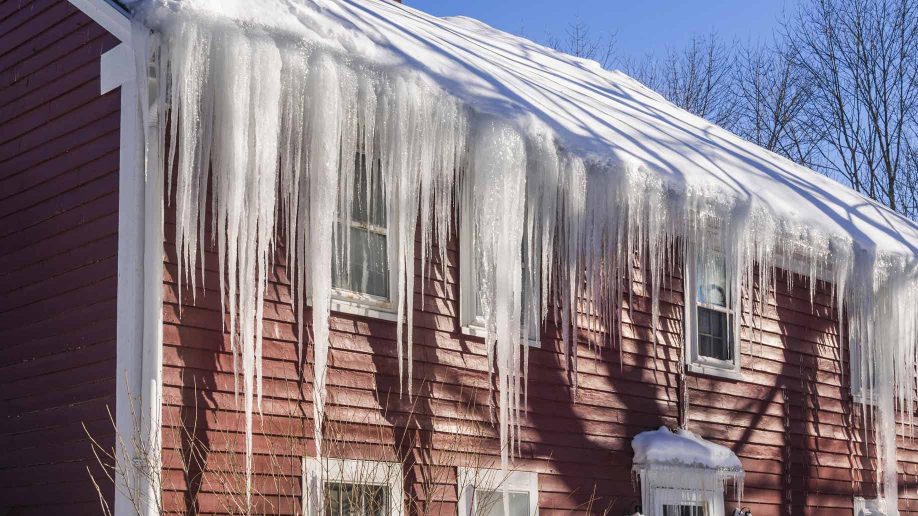
Avoiding Winter Water Damage at Home
In addition to chilly temperatures and snowy scenery, winter weather brings an increased risk of water damage to your home. Winter is notorious for being cold and wet, and large amounts of snow and ice can have severe consequences. This winter, spend less time worrying about water damage and more time enjoying the season with your family and friends.
3 Top Causes of Winter Water Damage
Burst or Frozen Pipes
Frozen pipes build up significant pressure, which can lead to cracks and flooding once the ice melts. Make sure your outer walls and any exposed pipes are properly insulated. Caulk cracks and holes you see in your exterior walls to prevent cold air from reaching the pipes. Shield exposed pipes from freezing temperatures by wrapping them with the insulating tape or old towels. When temperatures are very low, or you plan to be away from home for several days, leave the faucets lightly dripping and keep the cabinets under your sink open to allow warm air to circulate around the pipes. Doing so will keep water flowing and can help prevent your pipes from freezing. For maximum protection against hidden or sudden leaks, install a detection system that can monitor water pressure and automatically signal a water shut-off in the event of a leak or blocked pipe. This technology can reduce the amount of water damage caused by burst or frozen pipes in winter.
Ice Dams, Snow, and Roof Leaks
Icicles may be a staple of winter, but they can wreak havoc on your home. If your gutters are clogged, the snow that melts off your roof won't pass through the drainage system properly. As the water trapped in your gutters refreezes, a wall of icicles will build up, eventually causing ice dams. The melt from these ice dams can damage your roof and seep into your attic, causing structural damage or mold. Any ice melt that drips over the sides of your gutters has the potential to pool next to your home's foundation and cause additional water damage, as well. Finally, sharp icicles may break off as they melt, posing a severe safety hazard. Clean your gutters before the cold weather hits to keep the dangers of ice dams and roof leaks at bay.
Reduce Snow Accumulation
The longer snow stays in your roof; more likely there will be ice dams. Roof designs with low pitch, valleys and skylights can also contribute to ice damming. Valleys are especially prone to snow packing. Trying to shovel can be a scary and unsafe task. Homes that have metal roofing can enjoy the smooth surfaces that help the snow shed naturally. When in contact with the sun, the metal will dissipate the heat across the entire roof, shedding snow more evenly, even at the lower parts of the roof, where dams often form. Metal roofing can therefore be less prone to ice damming compared with asphalt or wood shingles.
Outdoor Water Sources
When the temperatures drop, you should shut off the water to your outdoor hoses and spigots. Drain any water from your hoses, and then store them, so they don't freeze, crack or break in the cold. Neglecting your outside water sources could cause problems when spring rolls around. Enjoy the beauty of the winter season without worrying about the weather damaging your home. Taking a few extra precautions can save you lots of hassle in the long run. If you do experience water damage this winter, call the experts at Thompson Building Associates. Our professional water mitigation teams are here 24/7/365, so you can get your home and life back to normal as soon as possible after a crisis.
